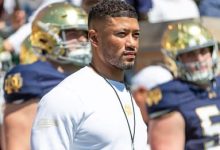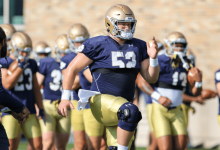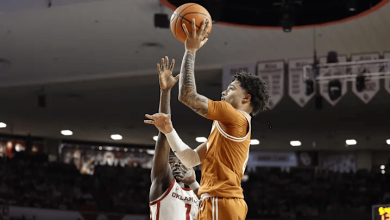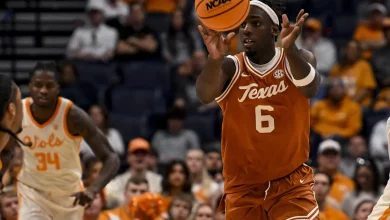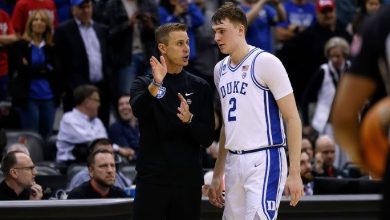Earl Campbell, legendary Texas Longhorns player, triumphed over Herschel Walker, Tim Tebow, and Archie Griffin to earn the title of the greatest college football player of all time.
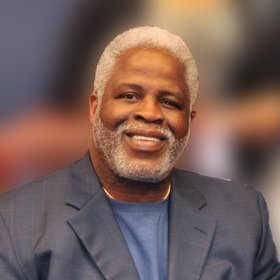
College football has long been a battleground of legends, where greatness is measured not just by statistics but by impact, influence, and the indelible mark left on the sport. Among the pantheon of collegiate legends, few names resonate as profoundly as Earl Campbell. His career at the University of Texas, his dominance on the field, and his subsequent recognition as one of the greatest college football players of all time cement his legacy. Yet, the debate over who holds the title of the greatest college football player often features other titans—Herschel Walker, Tim Tebow, and Archie Griffin—each with their own remarkable achievements. However, Earl Campbell’s unique combination of power, agility, and cultural influence set him apart, earning him the crown in many fans’ and analysts’ eyes.
Early Life and Rise to Prominence
Born on March 29, 1955, in Tyler, Texas, Earl Campbell’s journey to college stardom was marked by relentless determination and raw talent. Growing up in a modest household, Campbell’s early years were characterized by hard work and a natural affinity for athletics. His high school career at John Tyler High School showcased his exceptional running ability, catching the attention of college scouts across the nation.
Campbell’s decision to attend the University of Texas at Austin was pivotal. Under the guidance of head coach Darrell Royal, Texas became a powerhouse in college football, and Campbell’s arrival coincided with a golden era for the Longhorns. His combination of size (6’0”, 215 pounds), speed, and power made him a nightmare for defenses, and he quickly established himself as a dominant force in the Southwest Conference.
College Career and Achievements
Earl Campbell’s college career from 1974 to 1977 was nothing short of extraordinary. He redefined what a running back could be, combining brute strength with exceptional agility. His playing style was characterized by a relentless, punishing running ability that often wore down defenses, leaving a trail of broken tackles and frustrated opponents.
Freshman Year (1974): Campbell made an immediate impact, rushing for over 1,000 yards and earning all-conference honors. His explosive performances set the tone for his future dominance.
Sophomore and Junior Years (1975-1976): These years saw Campbell reach new heights. In 1975, he rushed for 1,744 yards and 18 touchdowns, earning All-American honors. The following year, he continued his assault on defenses, rushing for 1,454 yards and 15 touchdowns. His performances earned him the Southwest Conference Player of the Year award and national recognition.
Senior Year (1977): Campbell’s final college season was legendary. He set a then-NCAA record with 1,744 rushing yards and 19 touchdowns. He was awarded the Heisman Trophy—becoming the first Texas Longhorn to win the prestigious award—and earned consensus All-American honors. His leadership on the field and his ability to carry his team to victory made him a household name.
The Style of Earl Campbell
What distinguished Earl Campbell was his playing style. Unlike many of his contemporaries who relied primarily on speed or elusiveness, Campbell combined a powerful, bruising running style with exceptional agility. His ability to accelerate through gaps and break tackles made him a dual threat—both as a relentless power back and a nimble runner.
His running style was often described as “horsepower,” a testament to his physicality. He would lower his shoulder and plow through defenders, often leaving opponents shaken or injured. This physicality earned him the nickname “The Tyler Rose,” symbolizing his Texas roots and his graceful yet powerful running style.
Campbell’s impact extended beyond mere statistics. His presence on the field energized his team and intimidated opponents. His ability to control the game’s tempo often led Texas to victory, and his performances in high-stakes games, including the Cotton Bowl and the Texas-OU rivalry, further cemented his legendary status.
Post-College Success and NFL Career
While this essay focuses on his college legacy, it’s impossible to ignore how Earl Campbell’s college greatness translated into professional success. Drafted first overall by the Houston Oilers in 1978, Campbell continued to demonstrate his dominance in the NFL, winning the NFL Offensive Player of the Year award and earning three rushing titles. His college career set the stage for a professional career characterized by power, resilience, and excellence.
The Great College Football Legends
To understand why Earl Campbell is considered the greatest college football player of all time, it’s essential to compare him with other legendary figures—Herschel Walker, Tim Tebow, and Archie Griffin—each of whom has left an indelible mark on the sport.
Herschel Walker: A Georgia native, Walker’s college career at Georgia from 1980-1982 was marked by a combination of speed, vision, and power. He won the Heisman Trophy in 1982 at age 20, becoming the youngest recipient at the time. Walker’s ability to carry an offense almost single-handedly and his exceptional athleticism made him a dominant force. His career totals, including over 5,600 rushing yards, are staggering, and his influence on the game was profound.
Tim Tebow: Known for his dual-threat capabilities as a quarterback at Florida, Tebow’s college career from 2006-2009 was characterized by leadership, clutch performances, and versatility. He led Florida to two national championships and won the Heisman Trophy in 2007. Tebow’s relentless work ethic, combined with his ability to make plays with both his arm and legs, made him one of the most iconic players in college football history.
Archie Griffin: The Ohio State running back, played from 1972-1975, is best known for being the only two-time Heisman Trophy winner. Griffin’s consistency, vision, and leadership defined his career. He totaled 5,177 rushing yards and exemplified the steady, dependable running back archetype.
Why Earl Campbell Stands Out
While each of these players excelled in different eras and styles, Earl Campbell’s combination of physical dominance, statistical achievements, and cultural impact sets him apart. Here’s why:
1. Physicality and Running Style
Campbell’s punishing running style was revolutionary. His ability to absorb contact and keep moving forward was unmatched. He was a prototype for the power back, blending brute strength with agility. His style inspired future generations and changed how running backs approached the game.
2. Statistical Prowess and Awards
Winning the Heisman Trophy in 1977, Campbell’s stats included over 1,700 rushing yards and 19 touchdowns in his final season alone. His career totals at Texas—over 3,300 rushing yards and 26 touchdowns—were among the best at the time. The consistency and dominance he displayed in a highly competitive era underscore his greatness.
3. Impact on College Football Culture
Campbell’s persona and playing style became emblematic of Texas football. His nickname, “The Tyler Rose,” embodied the blend of toughness and elegance. His performances helped elevate the profile of college football in Texas and nationally, inspiring countless young athletes.
4. Overcoming Challenges
Campbell faced tough defenses and physical play but responded with resilience and determination. His ability to perform under pressure and deliver in crucial moments elevated his status beyond mere statistics.
The Debate: Who Is the Greatest?
Debates about the greatest college football player often hinge on various criteria—statistical dominance, individual awards, team success, cultural impact, and era of play. While Herschel Walker’s college dominance was unparalleled in terms of raw numbers and youthfulness, Earl Campbell’s style, influence, and leadership make a compelling case.
Tim Tebow’s versatility and leadership are undeniable, but his era was characterized by different offensive schemes that emphasized the quarterback’s dual-threat ability. Archie Griffin’s consistency and his unique achievement of winning two Heisman Trophies highlight his excellence, but Campbell’s raw power and game-changing performances set him apart.
Legacy and Enduring Influence
Earl Campbell’s legacy endures not only through his accolades but also through the influence he had on the game. His physical style inspired generations of running backs, and his story remains a testament to perseverance, talent, and passion.
In 2000, when ESPN and other outlets conducted polls and retrospectives to crown the greatest college football player, Campbell’s name frequently topped the list. His blend of individual excellence and cultural significance made him a symbol of college football’s rugged, exciting spirit.
Earl Campbell’s journey from Tyler, Texas, to college football’s summit epitomizes greatness. His ability to dominate physically and inspire emotionally places him in a league of his own. While Herschel Walker, Tim Tebow, and Archie Griffin are all legendary in their own rights, Campbell’s combination of style, substance, and impact secures his place as the greatest college football player of all time.
His legacy is a testament to what makes college football special: a blend of raw power, skill, leadership, and the ability to inspire generations. Earl Campbell remains an immortal figure whose name will forever be etched in the annals of college sports history.

